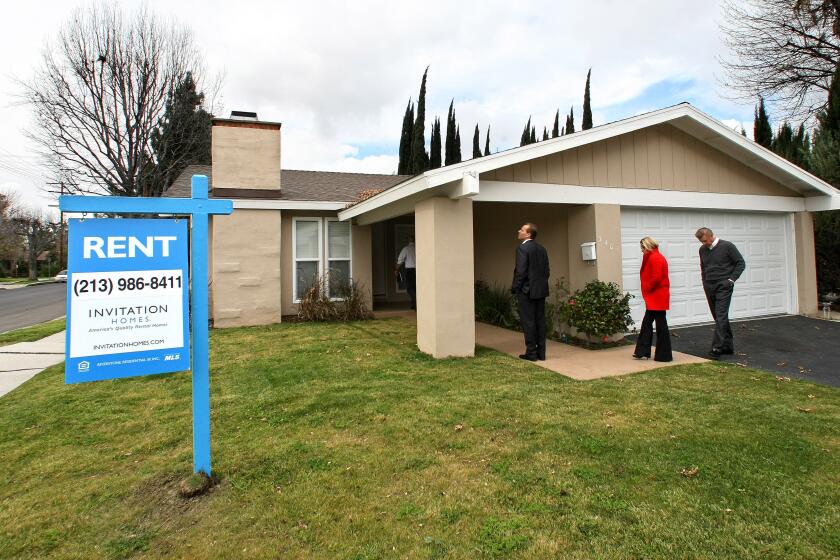Buyers of newly built homes face several challenges
You’d think that applying for a mortgage would be the same whether you are buying a newly built house or an existing one. But it’s not, so buyers of brand-new homes need to understand the differences.
For one thing, the timeline can be far longer — as much as six months, or sometimes even more. And the lender usually likes to see a little more earnest money on the table.
Typically with an existing home, the period from the application to closing is well-defined: usually 30 to 60 days. But when a new house is involved, the timeline is less clear-cut. It can be as quick as 15 days if you are buying an already finished house — and you have all your paperwork in order — to as long as 180 days if you are starting from scratch.
That means that you might have to keep your financial nose clean for far longer than if you were buying an existing home. No big purchases that could cause your all-important credit score to drop, no moving big chunks of money around for whatever reason, no co-signing a loan for Junior’s new car.
It’s the seller who dictates how much of a deposit is required when the sales contract is signed. In the existing home market, the more money upfront, the more likely you are to catch the seller’s eye as a serious buyer. But as little as $500 can sometimes hold the deal.
Builders, on the other hand, want more than the typical $1,000. Often, they require buyers to put up 5% of the contract price. And some builders want as much as 10% down before they will start construction.
Lenders want to see similarly large deposits on new houses, said Josh Moffitt, president of Silverton Mortgage in Atlanta.
When new construction is involved, Moffitt explained, lenders usually have to go through a “full-blown pre-approval” process. That means more work on their part.
A pre-approval also tends to remove as much as the risk as possible from the builder’s shoulders — and the lender’s — and place it on yours. Since you have a larger down payment at risk, you are less likely to walk away from a house built to your order.
Pre-approval aside, the main concern of serious new-home buyers is rising interest rates. To protect themselves, the smart ones look for rate locks.
“Rate locks are important, especially when volatility is the norm,” Moffitt said. “Up or down, we don’t know. Going into a contract which doesn’t close for four months creates a lot of exposure.”
A rate lock guarantees that the interest rate you will end up paying will not be any higher than on the day you applied for your mortgage. Typically, a lender will hold the rate for 30 or 60 days. But after that, you’re going to have to pay for what’s known as an extended lock.
How long and how much depends on your lender. But Moffitt said if the lender is quoting 4.5% today, you might have to pay an extra half-point to hold that rate for 180 days. Or the lender might agree not to go any higher than 5% if the hold is six months.
Whatever the cost, a rate lock is good protection. “You don’t want to go to closing and find out your monthly payment is $300 more than you expected,” Moffitt said.
It’s also smart to make sure your rate lock contains a float-down rider. That way, if rates should recede during the time your new home is being built, the rate you eventually pay for financing will be lower. Again, good insurance.
Another difference between new and existing home processes is the appraisal. With an existing home, the appraiser looks over the property, finds comparable sales and comes up with a valuation. But with new construction, there is no house to appraise, perhaps not even a model.
The appraiser makes his or her determination using the plans and specifications supplied by you and your builder and comes up with a value based on what the house will look like when it is completed. Then, when construction is finished, the appraiser makes a final inspection to confirm the place is worth what he or she thought it was in the first place.
But the real challenge is finding acceptable comparables. In a major subdivision, where all the houses are pretty much alike, it’s generally not difficult to find sales of similar houses. But nowadays, Moffitt said, lenders don’t want to see sales of properties that resemble the subject property as much as they do those of a more recent vintage, or those that are close by.
Consequently, neighborhoods, streets and even blocks can make a big difference in the appraiser’s ultimate valuation. Or if the lender says the most recent comps are more important than those that are equivalent to your house, sales from other school districts, on busy streets or lots not nearly as desirable as yours could come into play.
Distributed by Universal Uclick for United Feature Syndicate.
More to Read
Sign up for Essential California
The most important California stories and recommendations in your inbox every morning.
You may occasionally receive promotional content from the Los Angeles Times.






